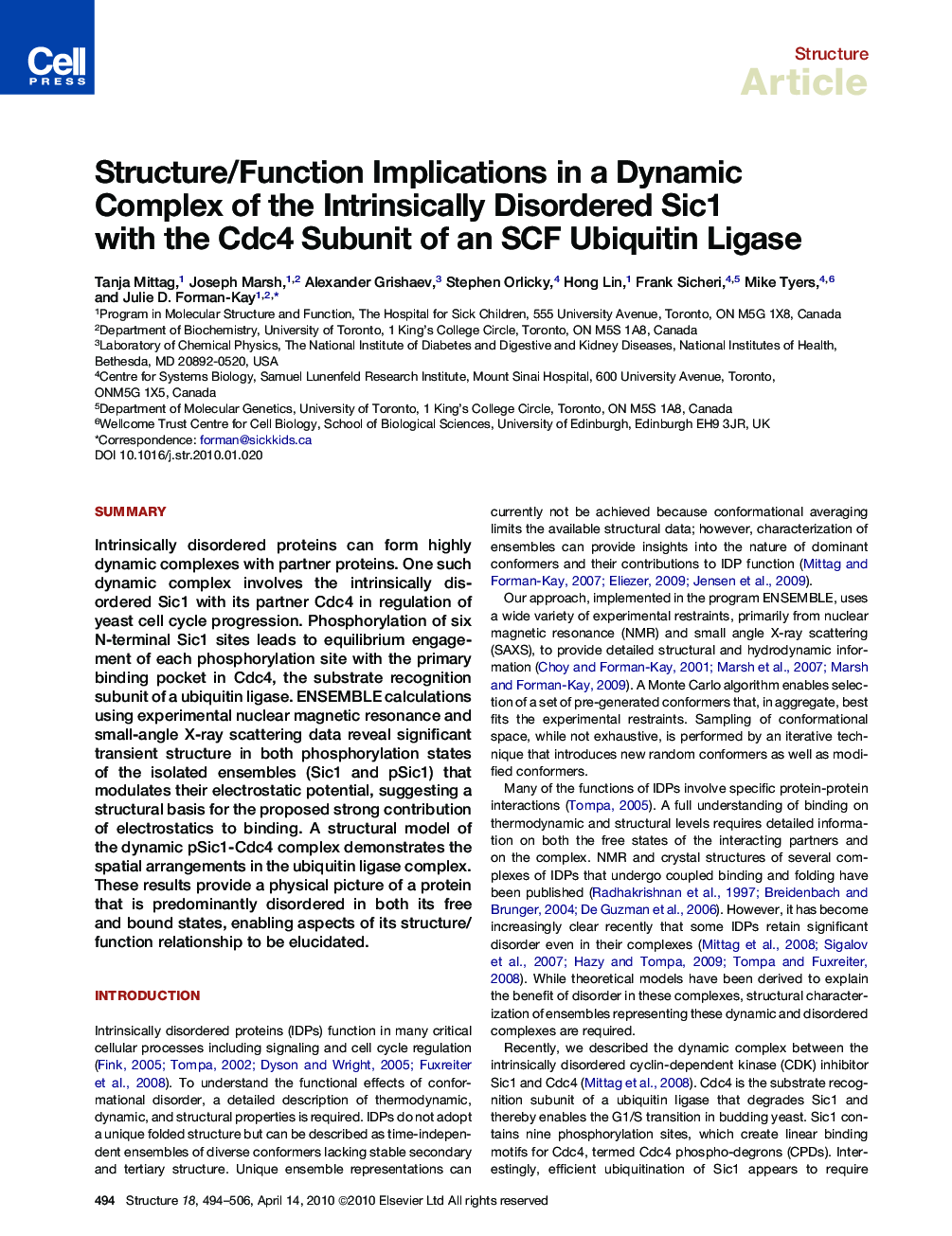| Article ID | Journal | Published Year | Pages | File Type |
|---|---|---|---|---|
| 2029993 | Structure | 2010 | 13 Pages |
SummaryIntrinsically disordered proteins can form highly dynamic complexes with partner proteins. One such dynamic complex involves the intrinsically disordered Sic1 with its partner Cdc4 in regulation of yeast cell cycle progression. Phosphorylation of six N-terminal Sic1 sites leads to equilibrium engagement of each phosphorylation site with the primary binding pocket in Cdc4, the substrate recognition subunit of a ubiquitin ligase. ENSEMBLE calculations using experimental nuclear magnetic resonance and small-angle X-ray scattering data reveal significant transient structure in both phosphorylation states of the isolated ensembles (Sic1 and pSic1) that modulates their electrostatic potential, suggesting a structural basis for the proposed strong contribution of electrostatics to binding. A structural model of the dynamic pSic1-Cdc4 complex demonstrates the spatial arrangements in the ubiquitin ligase complex. These results provide a physical picture of a protein that is predominantly disordered in both its free and bound states, enabling aspects of its structure/function relationship to be elucidated.
► Intrinsically disordered Sic1 and pSic1 contain significant transient structure ► Structure modulates electrostatic field experienced by folded binding partner Cdc4 ► Free pSic1 ensemble enables calculation of a model of the dynamic Sic1-Cdc4 complex ► Sic1 conformers can reach the catalytic cysteine in ubiquitin ligase complexes
